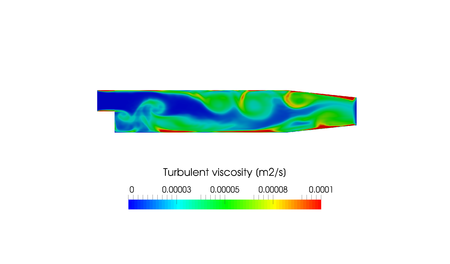Difference between revisions of "Turbulence modeling by Bahram Haddadi"
Jump to navigation
Jump to search
Jozsef Nagy (talk | contribs) |
Jozsef Nagy (talk | contribs) |
||
| Line 13: | Line 13: | ||
'''Explanation''': Use the pisoFoam solver, run a backward facing step case for 0.2 s with different turbulence models: Smagorinsky (LES), kEqn (LES) and kEpsilon (RAS). | '''Explanation''': Use the pisoFoam solver, run a backward facing step case for 0.2 s with different turbulence models: Smagorinsky (LES), kEqn (LES) and kEpsilon (RAS). | ||
| − | [[File: | + | [[File:tuvienna7.png|450px|right|]] |
'''Objectives''': | '''Objectives''': | ||
Revision as of 11:31, 14 March 2018
- contributor: Bahram Haddadi, Clemens Gößnitzer, Jozsef Nagy, Vikram Natarajan, Sylvia Zibuschka, Yitong Chen
- affiliation: Forschungsgruppe Thermische Verfahrenstechnik & Fluiddynamische Simulation am Institut für Verfahrenstechnik der Technischen Universität Wien, Austria
- contact: click here for email address
- OpenFOAM version: OpenFOAM 5.0 and v1712
- Published under: CC BY-NC-SA license (creative commons licenses)
- Editorial board: Bahram Haddadi, Christian Jordan, Michael Harasek
Turbulence – Transient
Explanation: Use the pisoFoam solver, run a backward facing step case for 0.2 s with different turbulence models: Smagorinsky (LES), kEqn (LES) and kEpsilon (RAS).
Objectives:
- Understanding turbulence models
- Understanding the difference between transient and steady state simulation
- Finding appropriate turbulence model
Picture: Bahram Haddadi, TU Wien
